The healthcare industry has specific challenges and the year 2020 has just confirmed that.
Since the start of the Covid-19 pandemic, employees are more than ever looking for a genuine connection to their hospital, their purpose, their colleagues and their team. Organizational culture is clearly important to healthcare employees.
At Involv, we’ve had the chance to work with more than a hundred organizations around the world to reinforce their culture through better communication with its employees. Especially in Belgium, we’ve rolled out intranet projects for many big hospitals such as A.S.Z, ZNA and AZ Damiaan.
In this blog post, I will share our findings from surveying internal communication professionals at more than 30 big hospitals and healthcare organizations in the Flemish region, Belgium.
1. What are the most popular internal communication channels?
Unsurprisingly, email, intranet and word of mouth are the top 3 most used internal communication channels in healthcare organizations.
To disseminate important company news, email remains the indispensable channel. One best practice that we’ve seen in many organizations is using email to drive traffic to the intranet. This can help with intranet adoption.
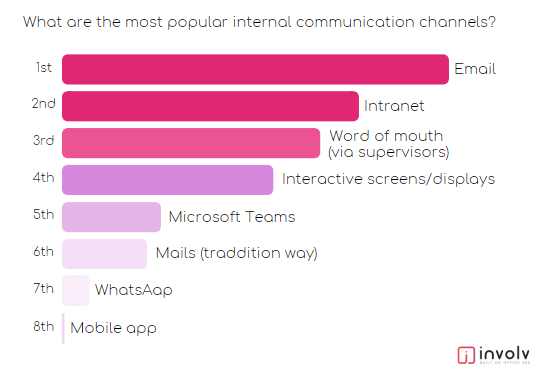
2. How many news and articles do you think should be published per month to ensure sufficient communication and good intranet engagement?
While most internal communicators in the survey believe that publishing 10-30 articles per month is enough, our best practice measurement shows a higher number.
What we’ve seen in healthcare organizations with a good intranet adoption and engagement is that, the amount of news and articles that are published each month is between 40-80. In organizations that published less than 25 items, we’ve noticed lower engagement.
Importantly, news and articles must target the right audience at the right time to ensure engagement and relevancy.
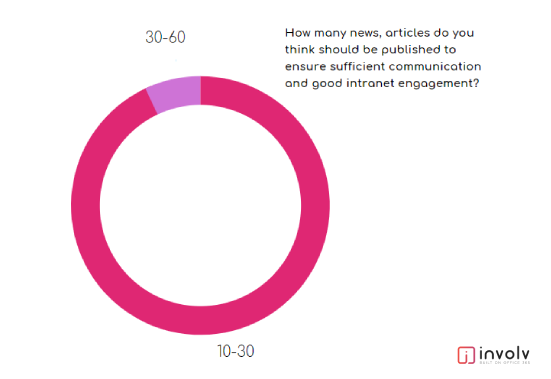
3. What type of communication should we focus on to improve employee engagement?
Receiving too much irrelevant information is as frustrating as having too little information. That’s why it’s first and foremost important to tailor your communication to employees’ needs if you want to have high employee engagement.
Next to that, we’ve seen one best practice in many organizations that has generated high engagement among their employees. That is, they put a lot of effort into creating and publishing fun and HR-related news such as holiday planning, employee reimbursement programs, training programs, etc.
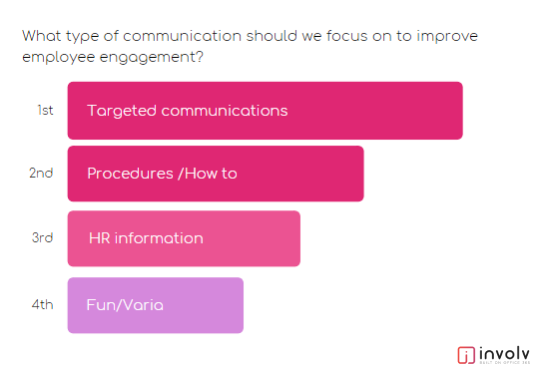
4. What are today’s intranet objectives?
Certainly, in most organizations, the biggest objective of an intranet is to inform and connect with employees. In addition to that, an intranet is also a great tool for people within an organization to share documents/files internally and get quick access to other tools and applications.
Especially in health care organizations, the intranet is often used as a knowledge base for all policies, procedures and forms.
We can leverage the intranet to boost social integration in the workplace. But this does not seem to be a common practice in many organizations. This also matches with the data that we’ve collected from more than a hundred intranet projects across all industries.
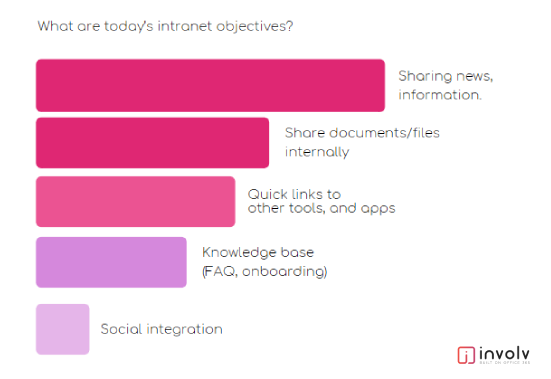
5. Who is responsible for the organizational culture?
Everyone agrees that the management team plays an important role in shaping and living the company culture. Next in line are the HR team and communication team who are in charge of making sure everyone in the organization understands and aligns with its culture.
However, once the organizational culture is shaped, it’s everyone’s responsibility to maintain and foster it.
That explains the importance of selecting and recruiting the right people that match your company culture.
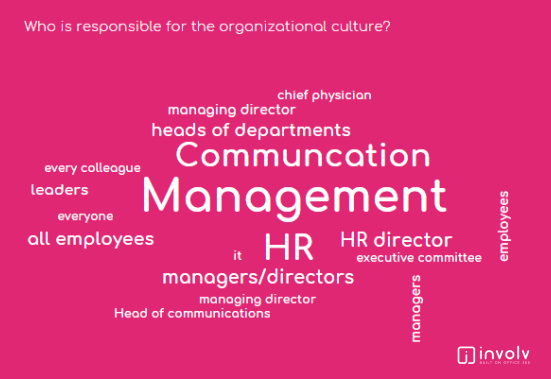
6. What challenges are internal communicators facing today?
This is one pressing challenge, not only for healthcare organizations, but any organization that has non-desk employees: how to connect and engage with non-desk workers?
They may not use a PC or laptop, some even don’t have an email address, but almost everyone today has a smartphone. So using a mobile is a common approach that most organizations choose to keep their mobile workforce aligned with the business.
There is also the fact that many non-desk employees are less tech-savvy. In this case, sharing information with them must rely on traditional methods such as via line supervisors, colleagues, office display and e-mails.
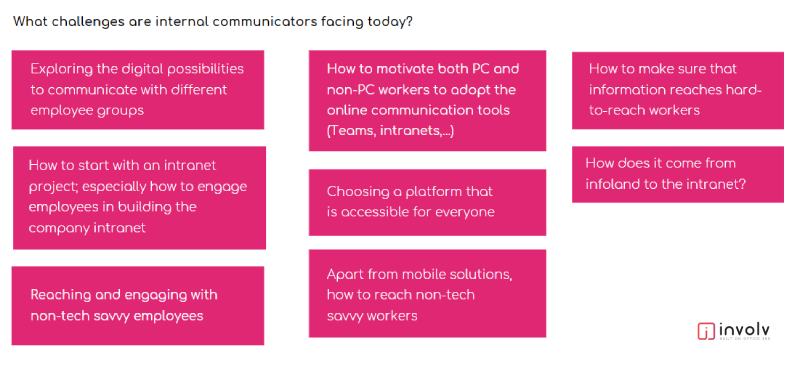
📑 You can download the presentation of the survey results here.

Tim Bogemans
Your Plan for Maximizing Employee Engagement
-
STEP 1. SCHEDULE YOUR DEMO
Get a demo and gain valuable insights in how the Involv intranet builds adoption.
-
STEP 2. CREATE A ROLLOUT PLAN
Together we co-create a rollout plan tailor made for your organization.
-
STEP 3. LAUNCH YOUR INTRANET
You’re all set to launch your intranet and get everybody involved.
-
STEP 4. ACHIEVE HIGH EMPLOYEE ENGAGEMENT
Use your Involv intranet to communicate effectively and engage employees.


